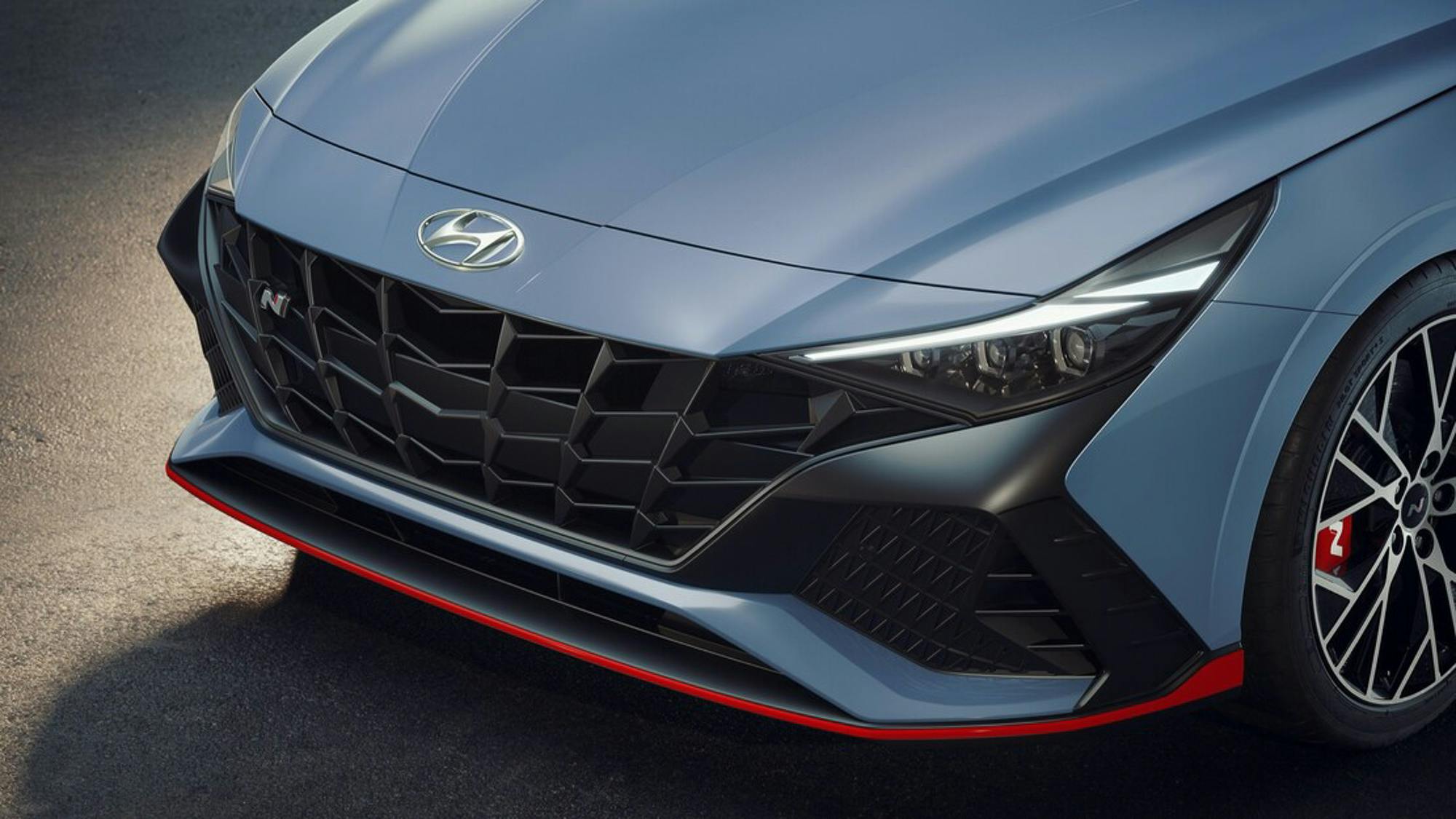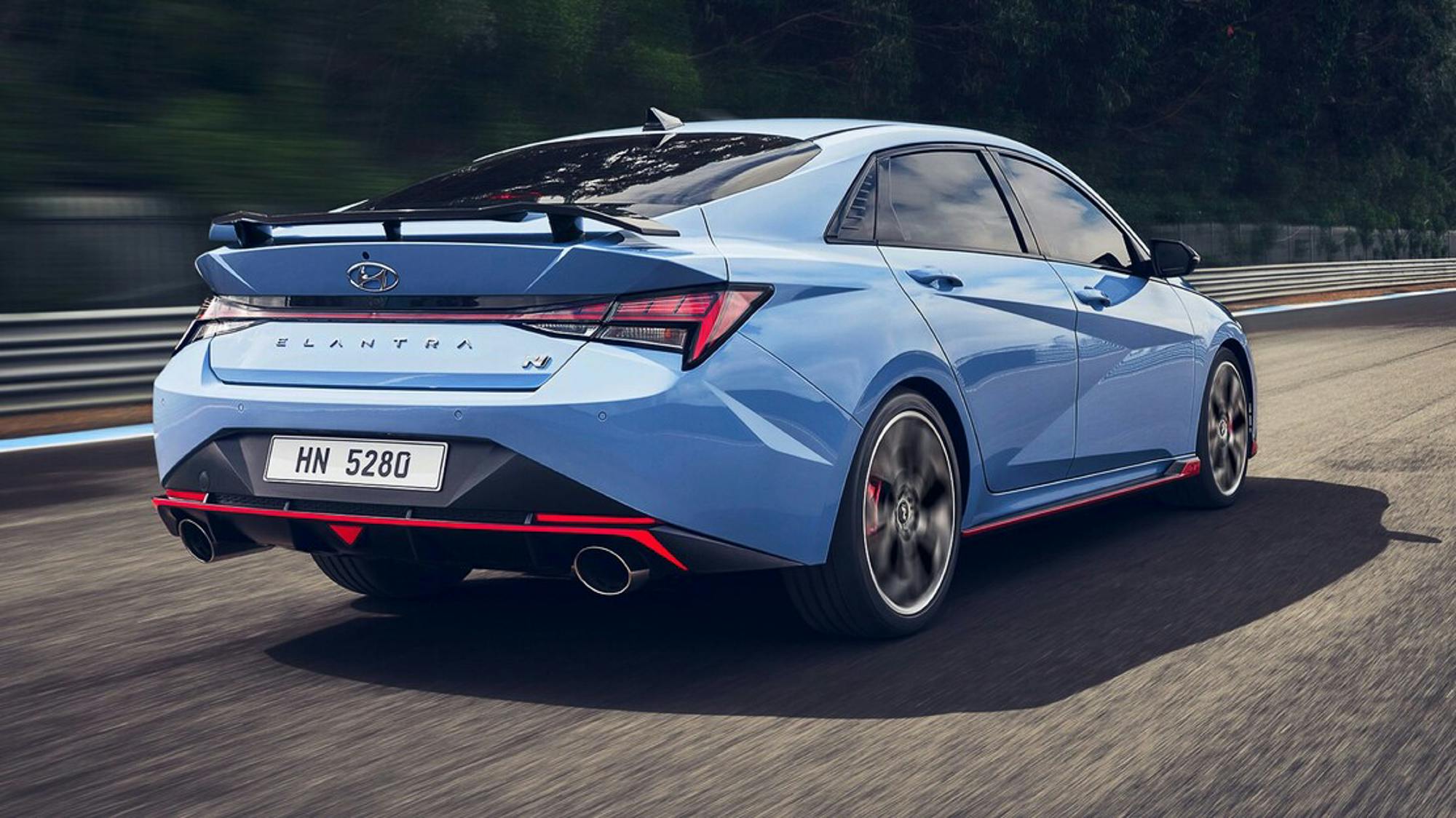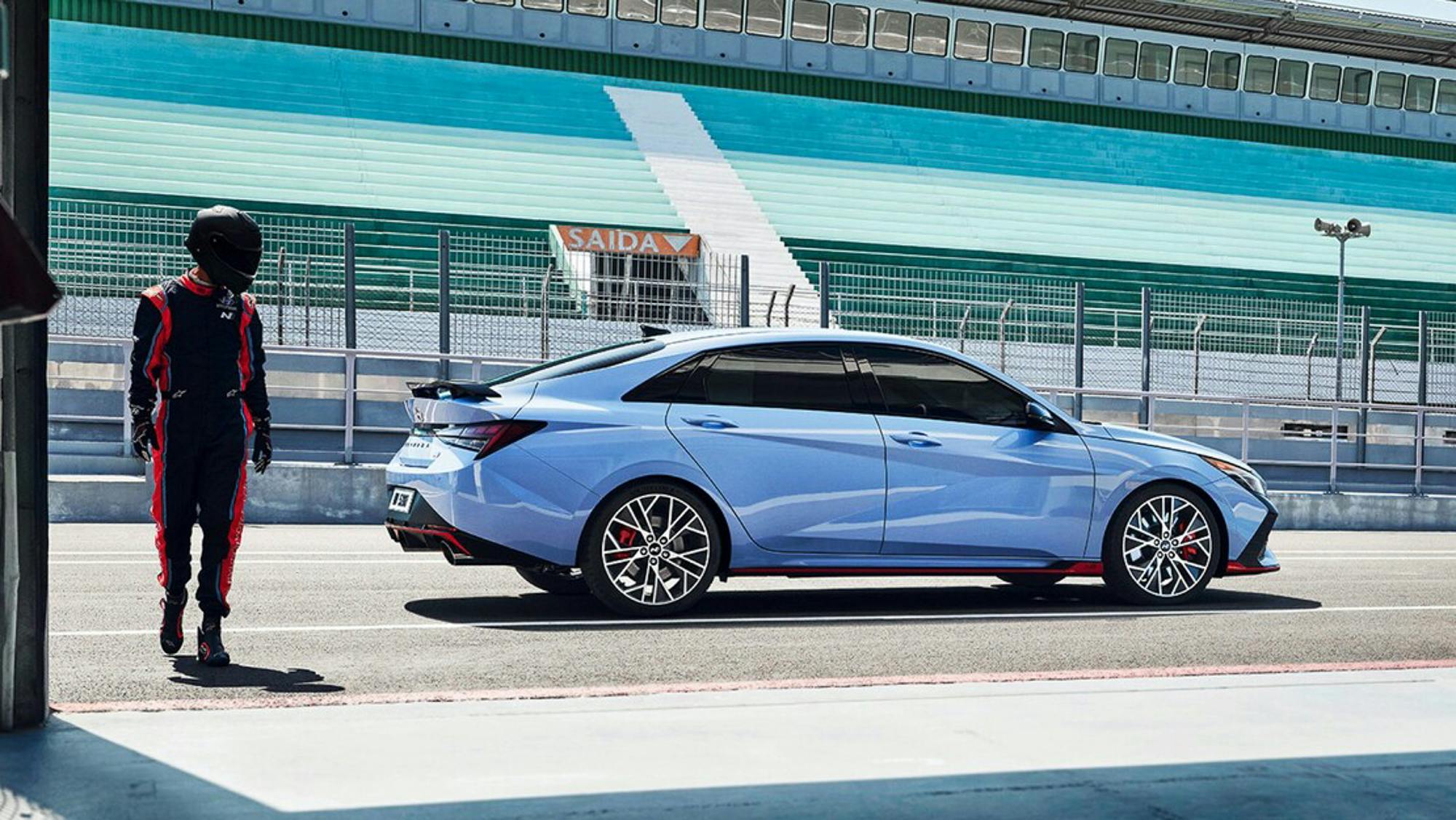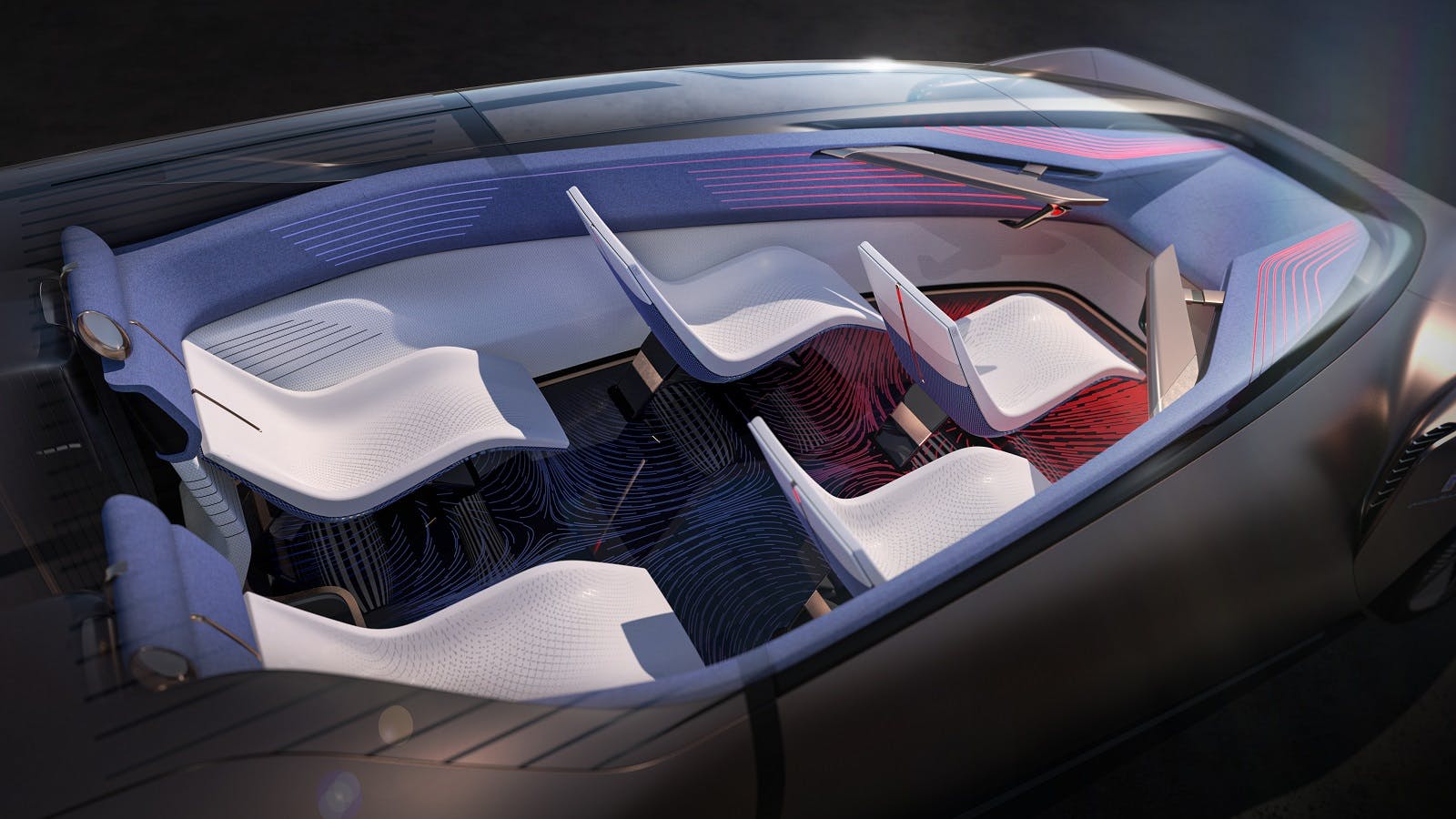Media | Articles
Elantra N packs 286 hp, Pininfarina reinvents the car door, all hail Valhalla
Welcome to The Manifold, our fresh daily digest of news and what’s happening in the car world.
Elantra N splits the difference between GTI and Type R
Intake: After much teasing and hyping, the Hyundai Elantra N is here. Joining the sensational Veloster N and higher-riding Kona N, the Elantra N is the first U.S.-market sedan for the young performance sub-brand. At its heart is a 276-hp 2.0-liter four-cylinder turbo engine with 289 lb-ft of torque. The engine is capable of 20 seconds with 286 hp from overboost on dual-clutch-equipped examples, while the standard gearbox is a six-speed manual. Dual-clutch models also get a launch-control function that serves up 5.3-second 0-60 sprints, and the top speed is 155 mph. An electronically controlled limited-slip differential is standard, as are 19-inch wheels with 14.2-inch front brake rotors and Michelin Pilot Sport 4S tires all around. As with the Veloster N when it was refreshed mid-cycle, the Elantra offers an optional N bucket seat for extra support, and track fans will appreciate the digital lap timer integrated into the infotainment system.
Exhaust: The $30,000 mark is where the Elantra will face off with the new Mk. 8 Volkswagen GTI, but once again, Hyundai’s ambition seems to be to split the difference between the 241-hp GTI and the 306-hp Civic Type R. In any case, it’s obvious that Hyundai is serious about picking up where Ford’s ST brand left off. There aren’t many brands left that serve performance enthusiasts looking for a competent, relatively affordable daily-driver sports car, and as long as you don’t need a hatch, the Elantra N should be a compelling new choice that at the very least appears to offer more visual excitement than the GTI-based VW Jetta GLI. If the Elantra N drives sweetly as the Veloster on which it’s based, the sedan might be the pick of the litter. Maybe that wing can be deleted, though?
Pininfarina Teorema is an autonomous lounge with a crazy canopy top
Intake: Italian styling house Pininfarina has just reinvented the way to get in and out of a car. Its Teorema concept car has a fighter jet-like canopy which opens to reveal a single rear door aperture for all five occupants to enter or exit. Once inside there’s a range of seating options. In Drive mode the three front seats face forward, with the driver in the middle McLaren F1-style. In Autonomy mode the front seats rotate to provide a sociable lounge-like space where all passengers face each other, and in Rest mode the passenger seats go flat to create a pair of lie flat beds. Underpinning the Teorema is an electric skateboard chassis from Benteler, and the huge canopy by Continental uses Intelligent Glass which can go opaque at the touch of a button to give passengers privacy or cut out light for a daytime snooze. The Teorema also uses Augmented Reality to project information on traffic and the local environment on the windscreen.
Exhaust: Pininfarina’s Chief Creative Officer Kevin Rice says, “Teorema wants to give people back the pleasure of living the car, driving and traveling, without the frustrations of increased congestion and other compromises, all while integrating AI, 5G and the latest technology to drive passengers towards new incredible experiences along the journey.” Starting with the way you get in, it would appear.
Marketplace
Buy and sell classics with confidence
This Lamborghini Miura SVJ is so rare it was never officially sold
Intake: One of only three Lamborghini Miura SVJs ever made is for sale by Swiss classic and supercar specialist Kidston. The SVJ was a development of the one-of-a-kind Lamborghini Jota which met a fiery end in 1971 and was built for a Corsican millionaire, with the other two cars going to the Shah of Iran and a property developer in Haiti. According to Kidston, all three still survive and chassis number 5090 was the final car built. Kidston oversaw a painstaking three-year restoration of the car led by Luca Salvioli of Top Motors who handled the mechanical side and Pietro Cremonini who took car of the bodywork and painting. As you can see from the video it drives just as good as it looks and may well be worth more than the island of Corsica itself.
Exhaust: Lamborghini built 120 Miura P400 SVs and, according to our valuation tool, they’re worth $2.7M apiece in Concours condition. Kidston doesn’t list a price for the SVJ, probably because no matter how high, there’s someone willing to go higher for this incredibly rare machine.
Production-spec Valhalla is a 937-hp movie machine made real
Intake: Aston Martin’s first series production mid-engine supercar, the Valhalla that’s set to appear on screen in the forthcoming Bond movie No Time to Die, made its official debut today with some fresh specs. The hybrid will source an AMG V-8 engine for its new PHEV powertrain, ditching its internal crossbred V-6. This 4.0-liter, twin-turbo, flat-plane crank V-8 sends power exclusively to the rear axle, while two supplemental electric motors assist the front and rear axles. Inside the eight-speed DCT transmission, both electric and ICE inputs are capable of controlling different gears simultaneously for a wild 737 lb-ft of max torque. The 150kW/400V plug-in battery system is responsible for 201 of the total 937 horsepower on hand. All told, the Valhalla flaunts a top speed of 217 mph, while completing a zero-to-62-mph run in just 2.5 seconds.
Exhaust: The imprint of former AMG frontman Tobias Moers is clearly visible here in the final iteration of Aston Martin’s latest and greatest hypercar. “With Valhalla not only have we stayed true to our commitment to build a world-beating supercar, but we have exceeded our original aims. The result is a pure driving machine—one which exists right at the cutting edge of performance and technology yet allows the driver to feel the emotion and thrill of complete connection and control.” British supercars using foreign V-8 engines is nothing new, and if you’re gonna pick one, AMG’s Biturbo is damn near one of the best.
Jeep adds top and door options for Wrangler
Intake: In its ever-evolving plan to keep Jeep buyers satiated with customization options, Jeep Performance Parts has added a bevy of top and door options for the Wrangler JL and Gladiator. Now buyers can opt for a Sunrider Flip Top that allows for a quick open-top experience without the need to stow the hard-top’s removable front panels elsewhere. MSRP is $895. Jeep has also released pricing on the new half doors, which start at $2350 for two-doors and $3995 for four-doors. Those come with zippered plastic windows, optional premium windows add about $200 for the two-door and $400 for the four-door. There are also tube doors, with optional mesh wind screens, and hardware that allows for side mirrors to be installed when the factory doors are removed.
Exhaust: Jeep continues to offer buyers unique ways to enjoy their favorite off-roader. This latest move addresses an area of criticism by presenting a solution to retaining side mirrors when the doors are removed. Some of these options have been available from the aftermarket, but now buyers know they’ll be getting genuine Jeep parts.













































